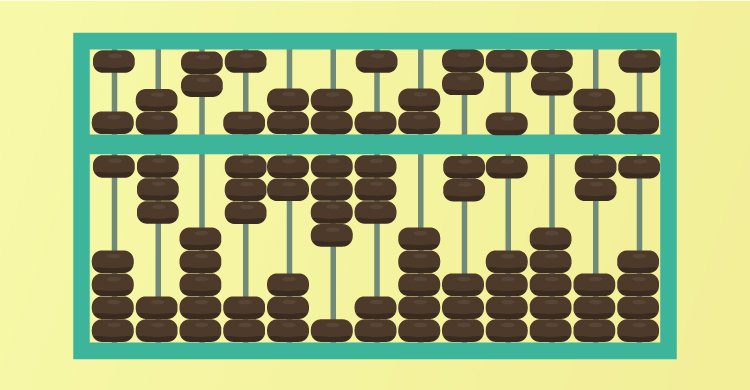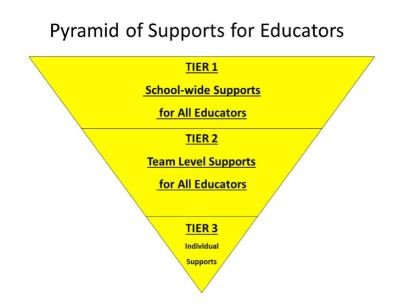Teaching is the noblest of all professions, and no other career plays a more powerful role in shaping who we are, how we think, and what we are capable of doing as human beings. Teachers help their students become better thinkers, problem solvers, creators, and dreamers. Teachers also possess the ability to help students turn their dreams into a robust reality, to inspire and equip young learners for the hard work of overcoming the many barriers they will confront in life. In short, teachers are the real game changers, if one criteria is met.
Teachers must possess the time, knowledge, and skills to lead all kids to excellence.
If we believe that every student counts, then we, as leaders, must believe that every teacher counts, as well. Today’s teachers have to overcome some formidable barriers of their own. They are charged with doing more than they’ve ever done in the history of education, with more challenging obstacles and higher standards than ever before. Many teachers are successfully adapting to the ever-changing environment of standards-based education and high-stakes testing as they ensure that students achieve.
Others, however, are falling through the cracks, and we know that when a teacher struggles in his or her craft, we can expect many students in that classroom to suffer gaps in their learning. Those gaps eventually fall to next year’s teacher to fill, diverting time and energy away from that year’s curriculum. This fact prompted me to evaluate myself as a leader and I came to this startling reality. I have a Pyramid of Interventions for Every Student, so:
Why don’t I have a Pyramid of Interventions for every teacher?
We must agree that the best way to guarantee that all students learn is to guarantee that every room is equipped with an excellent teacher. Furthermore, we must also admit that not every school meets that guarantee. All schools try to hire the best teachers, but what sets the best schools apart is their commitment to providing a strong, effective support system that can help every teacher continually advance and excel in their work. An excellent school doesn’t leave excellence to chance.
From Intervention to Prevention: Developing Instructional Excellence from Day One
In the history of education, very few teachers entered the profession and instantly reached excellence in all aspects of teaching, and even fewer teachers have had excellent results every year in their careers. Almost all teachers struggle in meeting the needs of students at some point in their career.
Typically, the most difficult years for teachers are the first five years in the profession. Over time, most teachers can expect their classroom experience to help dissipate these initial difficulties. The problem with waiting for experience to improve average or weak instructional performance is simple.
Tomorrow’s improvements won’t help today’s students.
Many struggling teachers are well aware of which areas of their craft present them with the most difficulties, and—in a safe and supportive environment—are open to support from leaders and fellow teachers. Our goal, as leaders, must be to find the most effective ways of providing that supportive environment and the systems it must offer in time to prevent teachers from failing, rather than intervening after the fact.
RTI for Teachers – A New Mindset for Teacher Improvement
As we have seen, the culture and systems within a school are what creates excellent teachers. When a new teacher is hired, he must be provided a system of supports and it should offer more than mere advice on how to navigate the day-to-day routines and procedures. We must go beyond providing orientation over one to five preservice days, consisting of multiple presentations; we know that this shotgun approach to orientation under the guide of professional learning is downright overwhelming for new teachers. To back up our belief in guaranteeing that all teachers reach excellence, we leaders must develop and promote a new mindset for teacher improvement.
How Teachers Advance: The Hierarchy of Instructional Excellence
The first step to guaranteeing excellence in every classroom is to prioritize the essential components of instructional excellence. To my core, I believe two things about teacher development.
- You can’t reach Bloom’s Taxonomy until you’ve addressed Maslow’s Hierarchy of Needs.
- If you focus on everything, you will focus on nothing.
In my book, A Leader’s Guide to Excellence in Every Classroom, I prioritized the components of teacher effectiveness by aligning it to Maslow’s Hierarchy of Needs. The reason is simple. Teaching is a relational business with actual people who have real human needs, and the classroom must be structured in such a way to meet those needs. Additionally, teacher growth is a personalized task, and it begins with leaders understanding that each teacher’s level of proficiency is at varying levels of proficiency as shown in the Hierarchy of Instructional Excellence.
RTI for Teachers and the Excellence Support System
Just like students require additional time and support, teachers are no different. We leaders must provide a system of supports that meets all teachers where they are and takes them where they need to be. The Excellence Support System is a 3-step process that guides leaders to create a robust system of professional learning that teachers access through 3 steps.
- School-wide Excellence Systems
- Teacher Team Excellence Supports
- Individualized Excellence Plans
The benefit of having this 3-step approach to professional learning is that teachers have 24/7/365 access to a wide range of learning opportunities such as the following: professional learning opportunities for large groups, collaborative learning for teachers with common outcomes and/or students, and personalized learning plans for all teachers who are working on their specific level of growth within the hierarchy. When teachers work in schools where the adult learning is the constant, student growth is inevitable.
Every Student Counts only when Every Teacher Counts
Student success is an obvious non-negotiable in every school, but the difference between ineffective and effective schools is not in having this goal but in having the system of supports and teamwork to reach that goal. Excellent schools look to their teachers as resources for adult learning, and we leaders must mine for expertise, develop expertise and empower expertise to lead all teachers toward excellence. The notion of school improvement can no longer rest on the back of the lone leader telling everyone what to do.
If every student is to truly reach the pinnacle of excellence, then every teacher, teacher leader, coach, campus administrator and district administrator must put their heart and soul into one system that guarantees the excellence of every educator first. When a school can create a system that produces excellent educators that deliver results, student achievement will take care of itself.
For more on this topic, check out the book and its free resources.
[author_bio id=”183″]








